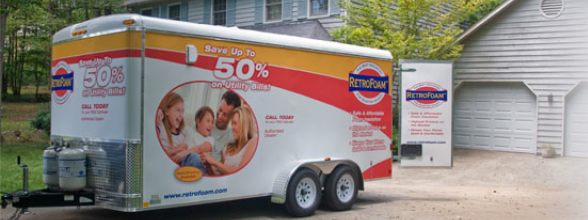Frequently Asked Questions
Free Estimates | Locally Owned | Financing Available
Request an EstimateFree EstimatesLocally OwnedFinancing Available
RetroFoam Iowa FAQ
- I don't think I have any wall insulation. How do I find out?
The easiest way to check if you have insulation in your walls is to have an outlet plate on one of the exterior walls removed and look into the wall cavity with a flashlight.
- Can I have RetroFoam installed from the interior of my home?
We recommend installing RetroFoam from the exterior but it is possible for us to install from the inside.
- How many holes will be drilled in my home?
For most homes, there will be one hole drilled in each stud cavity. On brick and a few other types of homes, we will drill more than one hole to ensure that we fill each cavity completely.
- How do you know when the cavity is full?
The unique nature of RetroFoam being a liquid form with the consistency of shaving cream when injected, allows it to flow around any obstacles including water pipes and wiring without getting caught up, filling the entire cavity.
Your licensed RetroFoam installer is a professional and approaches every job in a tradesman like manner, by applying a combination of techniques including; timing the cavity fill, methodical placement of the insertion holes, and with back-pressure on the insertion site, he is able to ensure a cavity is full.
- RetroFoam contains water when it is first installed. Where does it go? Will it damage the walls?
The initial water content of the foam is about 4% by volume, which is too low to affect a building’s structure. The partially open-cell nature of the foam means the insulation dries out quickly.
Once dry, RetroFoam resists re-absorption of water. Mold can occur whenever wetness gets trapped inside a wall. The foam dries out before mold can grow.
- Is it safe to fill the cavity of a brick veneer home? Doesn't there need to be a space for ventilation between the brick and wood framing?
A common misconception with brick construction is that the gap between the wood stud and brick surface is there for ventilation.
This is partially correct, however, the primary purpose of this gap is to keep moisture traveling through the brick, which is porous, from touching the wood and sheathing. If the wood is in contact with brick, it will take up moisture which causes the wood to rot.
RetroFoam is breathable, but also repels water. The foam fills the whole cavity space providing a suitable thermal barrier, without transferring moisture to the wood.







Share On: